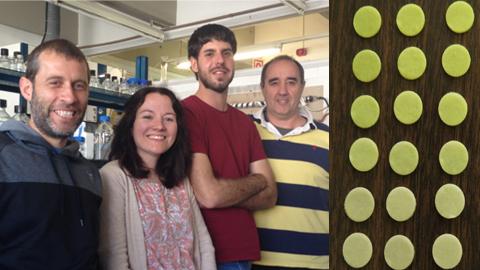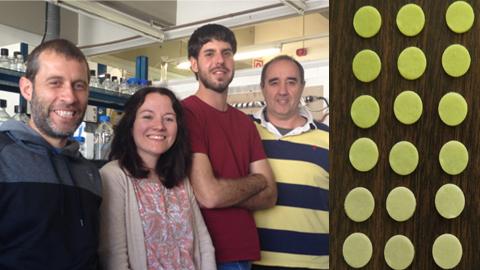
Researchers of the Environmental Microbiology Group of the UAB Department of Genetics and Microbiology have developed a paper-based biosensor covered with bacteria to detect water toxicity. This is an innovative and inexpensive biological tool which can be easy to use in economically restricted areas or developing countries.
The detection of toxic contaminants is an essential element of analysis and control of water quality, something very needed in an increasingly urbanised and industrialised world. Chemical analysis techniques are of great utility in determining specific substances, but are limited when used to analyse complex samples which can contain multiple contaminants. In this sense, the use of biosensors is appropriate, in which they measure the effect samples have on a biological element, such as enzymes or proteins, or on a vital parameter of an indicator organism.
"The innovation provided by our sensor is based on the use of absorbent paper matrices with entrapped bacteria with the aim of conducting colorimetric measures of toxicity", explains UAB researcher Ferran Pujol, who conducted this study as part of his PhD thesis. In this work, researchers used Escherichia coli (E. coli) cells were used as model bacteria. The paper was recently published in Analytica Chimica Acta.
The detection technique proposed and validated by researchers is quick and simple. In fact, its mechanisms is similar to that of paper strips used to measure the pH of water. The samples analysed are added to the matrices together with the colouring agent ferrocyanide, which ranges from yellow to transparent when breathed in by the microorganisms.
The paper changes colours according to the intensity of the cell metabolism of the bacteria, inversely proportional to the toxicity of the sample: the more the colour changes, the less contamination detected. These changes can be measured with optical techniques, by analysing the image or with the naked eye.
The bioassay, which researchers have applied a patent for, detects any contaminant which can be toxic for the microorganisms after some 15 to 30 minutes of coming into contact with the cells (time taken to conduct the test), such as heavy metals or hydrocarbons such as petroleum or benzene. The technique can be applied to both natural waters and urban and industrial wastewater.
Using a material such as paper and without the need of complex tools makes this biosensor a simple and inexpensive technique which can be used to detect toxicity in contexts of economic restrictions or in developing countries, researchers indicate.
Collaborating in the development of this bioassay were researchers from the UPC Centre for Research and Innovation in Toxicology and the National Centre for Microelectronics (IMB-CNM).
###
Media Contact
Maria Jesus Delgado
[email protected]
34-935-814-049
@UAB_info
http://www.uab.es





